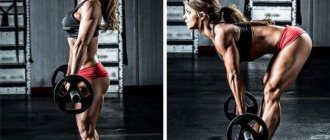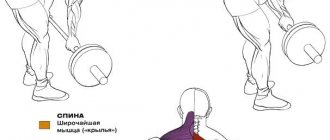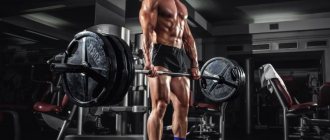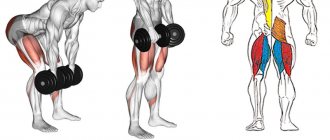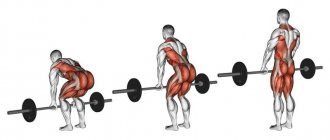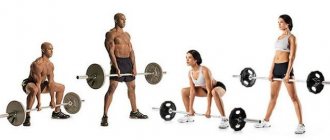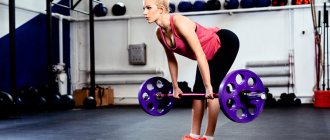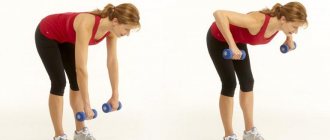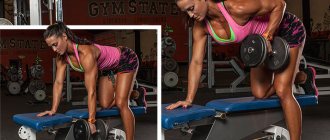Origin
The official existence of powerlifting as a sport was recorded in December 1964, although the exercises included in it were developed earlier.
By that time, the rules for performing all three disciplines had already been practically developed.
The first mass publication written about powerlifting was released in 1978. Before the decade ended, about 20 countries competed in the sport at the World Championships.
The first world powerlifting championship was held in 1971 in York (USA), but some controversy arose due to the lack of standardized rules. The International Powerlifting Federation (IPF) was then created in 1972 to establish a standard set of rules that athletes from all countries must abide by.
At the time, powerlifting was an exclusively male sport, but in 1978 the IPF also held competitions for women, and powerlifting became very popular among the female bodybuilding community.
The first world championship for women was held in 1980 in Lowell (USA).
Exercises
Powerlifting is a powerlifting event that includes disciplines such as the squat, deadlift and bench press. All of these exercises are basic because they involve several muscle groups at once.
The first discipline, the barbell squat , has several variations, but in competitions certain rules are imposed.
The athlete begins the exercise in an upright position with the bar resting on the back of the shoulders and upper back. At the judge's command, the athlete lowers into a deep squat until the hips are below the highest point of the knees. The powerlifter then straightens up again before the attempt is counted.
The bench press is performed on a horizontal bench with the initial position of the barbell on outstretched arms above the chest. After the judge’s signal, the athlete lowers the bar to the lower part of the chest and, at the next signal, presses the barbell up to its original position. In this case, the athlete’s legs are placed on the floor, and the buttocks do not leave the bench.
Deadlifts are performed from a standing position. At the judge’s signal, the athlete raises the barbell until his back and legs are completely straight. If the exercise is completed successfully, the judge gives the signal to lower the bar. There are two versions of this discipline recognized in competitions: the regular deadlift in a narrow stance and the deadlift in a sumo stance.
Which is better: deadlift or squat - basics and relationship
Before we talk about which exercise is better - the basic deadlift or the squat - a little detail about each of them. Let's start with the deadlift.
What you need to know about the deadlift?
I’ll say right away that the deadlift is my favorite exercise, however, I do not deny that it is one of the most risky and may well cause injury, for example, a herniated disc! However, if you dream of building a new and strong body, then after some preparation it is the deadlift that will help you achieve your goal!
Not everyone can afford to do deadlifts - and this is the main feature of the exercise.
Only athletes with a truly strong muscle corset can treat themselves to such luxury! If there are problems with the corset, then even perfectly correct technique and relatively light weights will lead to injury! Having a strong muscle corset, even athletes who do not observe the subtleties of technical performance and work with exorbitant weights will not get injured - and this says a lot! Before you start working on deadlifts, you need to take care of pumping up your back, and not vice versa.
Safe, correct deadlift technique involves squeezing your shoulder blades together and pulling your head back.
With a competitive squat, on the other hand, you need to engage your shoulders and shoulder blades, but not slouch or hunch your back, which is much more difficult than with retracted shoulder blades, but it makes your arms longer and you can pull more weight! It’s really better to start working on the exercise this way, with your shoulder blades retracted, following a proven algorithm, but if over time you try to repeat the exercise the way representatives of the world elite do, even with a slightly non-classical technique, it won’t be wrong. Moreover, perhaps new execution options will help you feel more comfortable.
Of course, I don’t encourage you to forget about technique and do deadlifts the way bodybuilding gurus do.
I just want to say that technology is relative, but only if you can afford to experiment without fear for your health, that is, having a powerful base! In the first few years, beginners will need to follow the step-by-step instructions and not violate the algorithm for performing the exercises, and only after the body is prepared, try to introduce something new into the exercise!
Many people believe that regularly performing deadlifts leads to a larger waist.
As a person who has verified this from personal experience, I hasten to answer you - this is not true! At one time, when my best sumo deadlift was 225 kilograms, I decided to see if deadlifting would really affect my waist width.
For six months I did the exercise, and as a result I was able to increase the figure to 250 kilograms! As for the waist, after measurements it turned out that it had not increased.
Summarizing all of the above about deadlifts, we note the following:
- Beginning athletes should do the exercise only with light weights and only after six months or a year of active work in the gym on exercises aimed at strengthening the muscular corset.
- At first, you need to work only by following the traditional technique of performing the deadlift, and only after a year has passed, experiments are allowed.
- Sumo deadlifts are great for lifting heavier weights, but you'll need to try them out to see if they're right for you.
- Deadlifts do not promote a wider waist.
- Deadlifts cannot be performed by thin guys with weak backs and novice athletes due to the high risk of injury.
To start working on their core, skinny guys will need to gain mass without “farming” by sticking to proper nutrition and following a training regimen! A program can be considered effective only if it brings results - it promotes the growth of muscle mass.
Barbell Squats - Basics
Squats with a barbell in strength sports are considered a basic exercise. It can be found in the training program for athletes in almost any sport. Skiers, sprinters, wrestlers and even track and field athletes do squats with a barbell. In every sport where you need to be fast, jumping and strong, the barbell squat is truly a necessity.
Squats are considered one of the most suitable exercises for gaining mass and strength throughout the body! Naturally, the main load falls on the lower part of the body - the legs and back.
During squats, several muscle groups and joints work at once, so the exercise is considered multi-joint. The work involves the knee, hip, and ankle joints, acting in concert.
Different variations of the exercise help to shift the load on certain muscles in the lower body, but each of them in one way or another involves the quadriceps.
The hamstrings and calf muscles act as stabilizers during barbell squats; the abdominal muscles and back extensors also work.
The benefits of squats include the following:
- exercise promotes enhanced functioning of the endocrine system, which leads to the release of testosterone;
- correct squats create a general strengthening effect;
- the exercise is available in different variations;
- Squats are easy to perform and do not require years of experience.
Now that you know what a deadlift is and why squats are performed, you can return to the question of what is better - a squat or a deadlift.
Why do you need equipment?
Powerlifting athletes can use equipment to improve their performance. This includes athletic tape, special shoes, weightlifting belts, knee pads and wristbands.
As technology for the production of sports equipment developed, powerlifters began to be divided into two categories:
- athletes using support equipment;
- athletes performing in regular sportswear.
In practice, raw powerlifting means that athletes are only allowed to use federation-approved belts, clothing, and wristbands in competition.
An equipped powerlifter uses additional equipment to protect the body and increase the weight lifted: special tights and a shirt for performing bench presses.
The newest equipment allows the athlete to lift more weight than he would otherwise be able to lift, up to approximately 115% of his maximum level. The equipment used varies from federation to federation.
Special flat shoes allow the powerlifter to distribute weight through the back of the foot. Their soles are stickier than most regular shoes and prevent slipping.
When performing bench presses, flat shoes are not as beneficial, and many athletes prefer shoes with an elevated heel.
Powerlifting suits are made from one or more layers of fabric with high tensile strength. When an athlete takes the starting position for a deadlift or squat, the fabric of the suit stretches and tends to return to its starting position. Therefore, when performing an exercise at the top of the lift, the suit helps the athlete hold the weight.
- When used correctly, a weightlifting belt significantly increases core stability and reduces the risk of injury.
- Wristbands are most often used during bench presses or squats. They help stabilize the wrist and allow powerlifters to lift heavier weights safely and more comfortably.
Standards
All athletes in powerlifting are classified according to several parameters, including weight, age group and experience level. There are about ten weight categories for each gender, and ages range from teens to 70+.
In any group there are both beginners and experienced athletes.
The competition typically lasts all day, starting with a barbell squat, followed by a bench press, and finishing with a deadlift. Numerical weight lifting standards for each group are given on the websites of powerlifting federations and may vary depending on the equipment used.
- The athlete is allowed three attempts in each discipline to perform the lift.
- Only the successful attempt with the heaviest weight is counted.
- Awards are given to the powerlifter in each class who lifts the heaviest weight in the squat, press, deadlift and total.
A powerlifter must have at least one successful attempt in each event to receive a final grade or be disqualified. The following are the most common disqualification rules under which an attempt will not be counted.
Barbell Squat
- Inability to squat deep enough – the top of the thigh with the hip joint should be lower than the top of the knee.
- Failure to comply with the referee's command at the beginning and end of the lift.
- The bar can be held on the way up, but there should be no downward movement.
- During the attempt, the athlete cannot take a step forward or backward.
- A powerlifter should stand straight with knees locked at the beginning and end of the lift.
- Any release or failure of the bar after the lift ends the exercise.
Bench press
- The bar must stop at chest or abdominal level (but not touch the strap) and remain motionless until the judge gives the command.
- A powerlifter's arms should rise evenly throughout the rest of the lift.
- The athlete must fix his arms at the beginning and end of the lift.
- There should be no downward movement of the bar during the lift.
- When performing, do not raise your shoulders and buttocks.
- The athlete must follow the judge's command at the beginning and end of the lift.
- Any contact of the powerlifter’s feet with the bench or its supports is avoided.
Deadlift
- The powerlifter should stand tall with his shoulders back and knees locked as he completes the lift.
- There should be no downward movement of the bar during the lift.
- During the attempt, the bar cannot be supported by the athlete's hips.
- The athlete must follow the judge's command at the end of the lift.
- You cannot throw the bar onto the platform without controlling the movement.
Squats or deadlifts: which is better, exercise technique, effect on muscles and their combination
- August 4, 2018
- Workouts in the gym
- Anastasia
According to most athletes, squats and deadlifts are two parts of one integral process, therefore, which of them is better is an eternal question, since it is quite difficult to separate them in principle.
However, many beginners are concerned about this issue, because they want to quickly achieve the desired results, but experience some difficulties in approaching the sports program.
In this article, we will analyze each exercise separately and find out all the benefits of the exercises, and in conclusion we will conclude which is better: squats or deadlifts.
